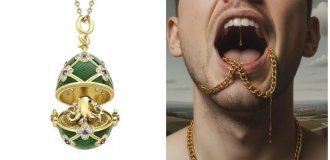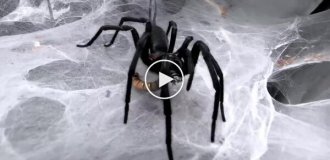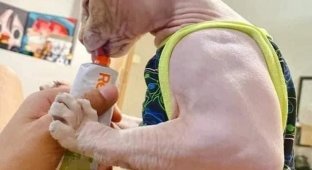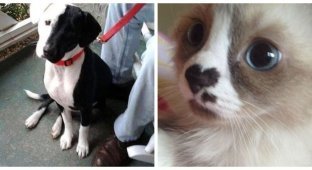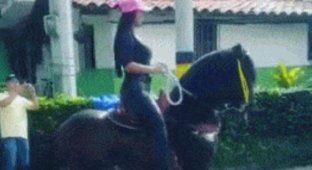Pink grasshoppers: a strange natural phenomenon that confuses (9 photos)
The first thing we need to do is figure out who's in the photo. And the photo shows different representatives of the Orthoptera order. Not only grasshoppers, but also locusts and grasshoppers. This means that insects can change their palette regardless of their species. 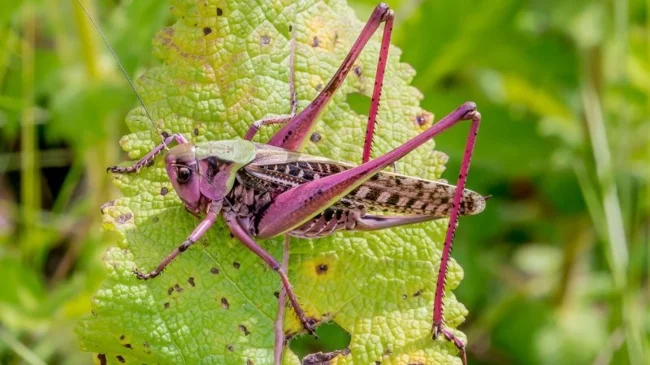
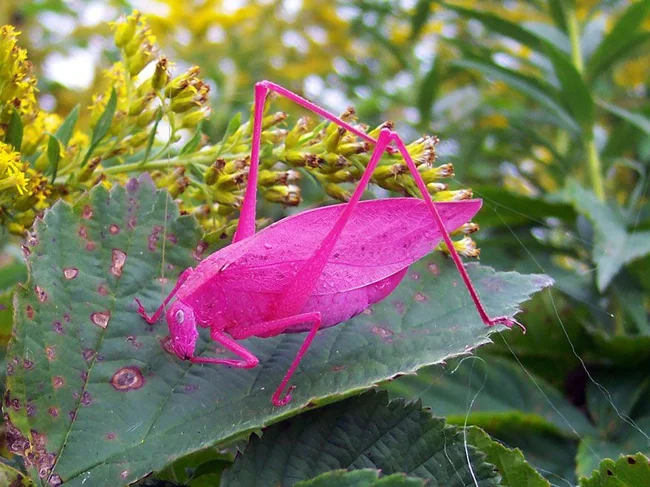
I don't understand why this pink leaf is staring at me so intently?
The second thing to understand is: why do pink grasshoppers surprise us at all? Even in the middle zone there are bright insects: ladybugs, soldiers, ground beetles. What can we say about the tropics! But it is the grasshoppers that cause surprise. 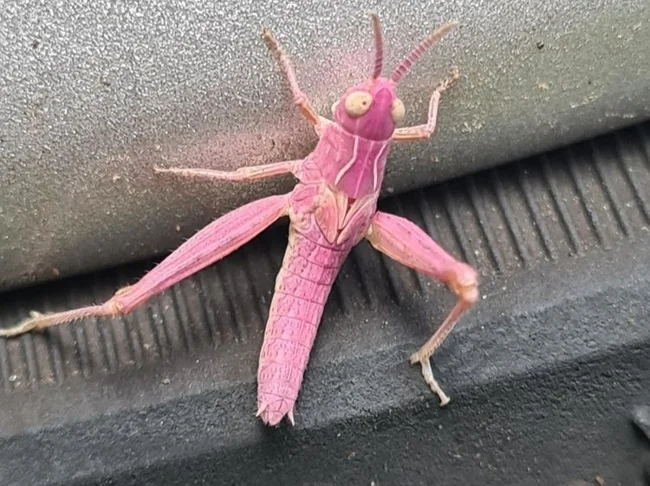
Hi, can you give me a lift to Barbie's house?
The thing is that all the above-mentioned comrades are toxic. Literally: they are either poisonous themselves, or they spray poison on others. And the bugs honestly tell the world about this with their bright colors. While the grasshopper and company rely on stealth. They became green like cucumbers not so that people would sing songs about them, but so that no one would notice them in the lush vegetation. And pink doesn’t fit well into the landscape design of most fields and gardens. 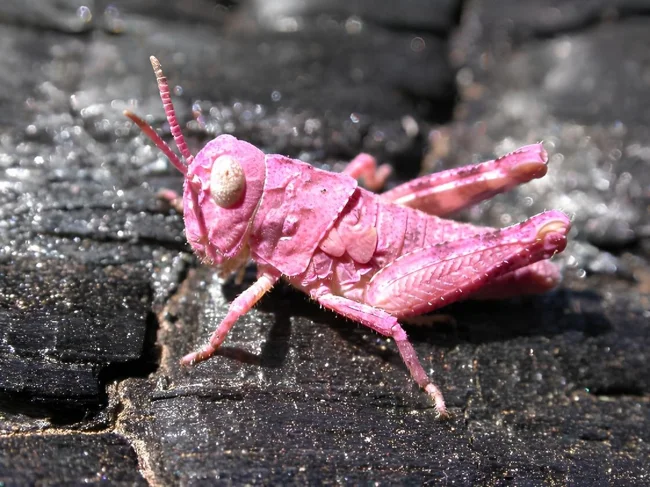
— Son, stop wearing pink, you’ll be eaten in a couple of minutes! — I don’t care, Mom, I want to stand out!
The third thing we’ll remind you of is that orthoptera are not always green. Their palette changes depending on where they live. The grasshopper can be green, gray, brown, yellowish, or gray-brown-crimson. The main thing is that the suit should ideally match the local field/meadow/wasteland. 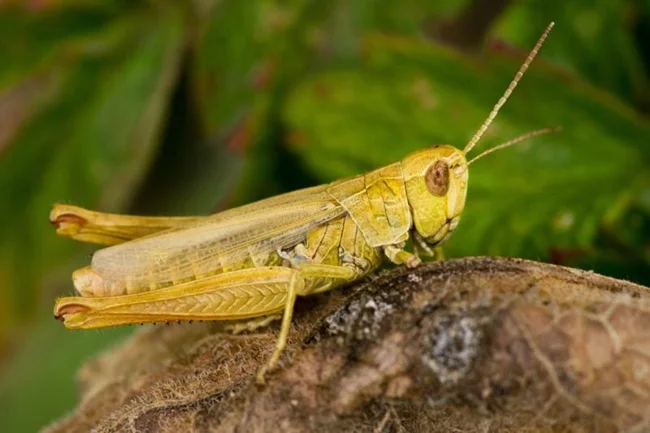
These are examples of different colors in different species of orthoptera. 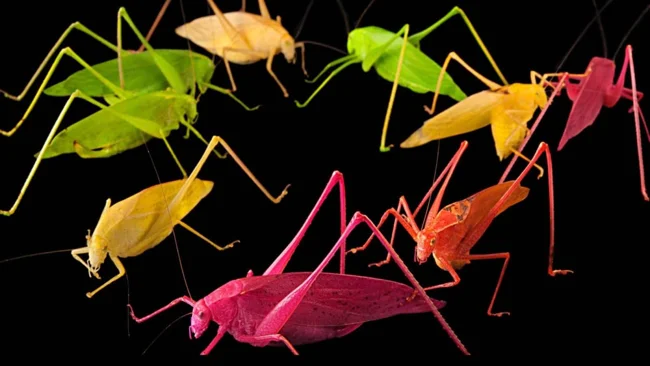
This grasshopper can work as a traffic light!
And now we come to the main question. Why are insects pink? Well... at the moment there is no clear answer. Even among entomologists. However, this does not mean that there are no versions that could explain this phenomenon. Here are examples of erythrism - a change in the pigmentation of an animal towards red, orange or pink. This anomaly is found in many animals: from reptiles and insects to big cats and ungulates. In the case of orthopterans, there can be two reasons for the change in color. 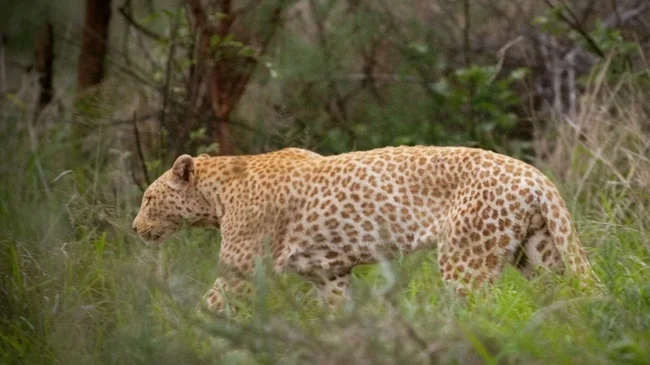
Examples of erythrism in different animals. In the first photo - a "strawberry" leopard. Note that its spots are not black, but brown-red. In the second and third photos: a frog and a snake. Both, like grasshoppers, have pink shades!
The first is genetics. Many experts believe that pink is the result of a mutation in the genes responsible for color. Amelanism, for example. That is, the absence of the dark pigment melanin in the body. As we have already said, orthoptera can be of many different colors. And since the dark pigment is absent, other pigments: red, yellow, green - mix with each other in different proportions, giving such a beautiful color. There is another option: too much red pigment, which is why the color also comes out erythric even in the presence of melanin. 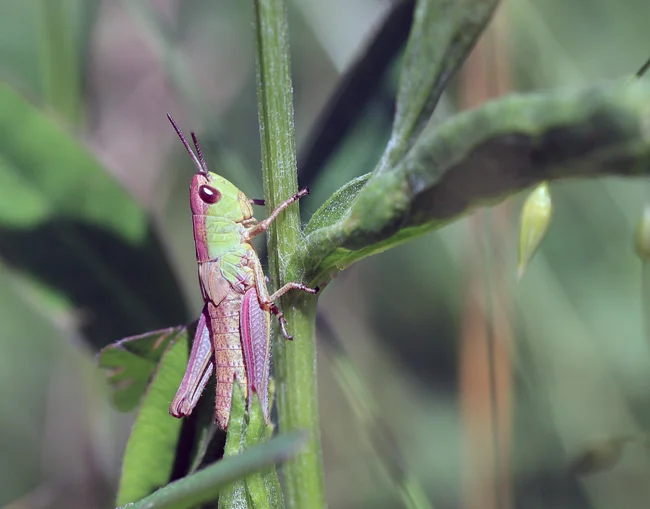
Perhaps this filly should have turned out brown-green. But due to the lack of melanin, it turned out pink-green.
According to the second version, the palette of the substrate in which the larva develops plays a decisive role in the formation of the pink color in orthoptera. And there are grounds for this point of view. Insects choose what kind of suit a grasshopper or locust will chase while still in the egg. If the larva develops in a dull wasteland, orthoptera will be born in 50 shades of gray. If the clutch is made in lush grass, the larvae crawl out green. If in a field - yellow. And if in clay soils? That's right, pink, red and brown! 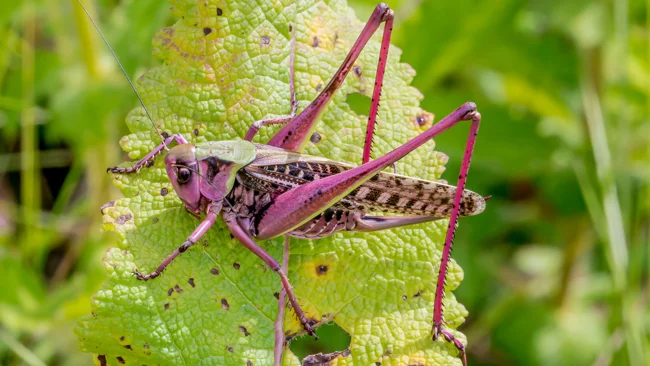
In some situations, such coloring really does look like camouflage. A grasshopper can be mistaken for a small flower.
Genetics, environmental influences, and a great many other factors are important in the formation of the appearance of living beings. While there is no clear answer, we choose the version that we like best. The author, for example, generally believes that both are true. It's just that in different particular cases, the reasons are different.





